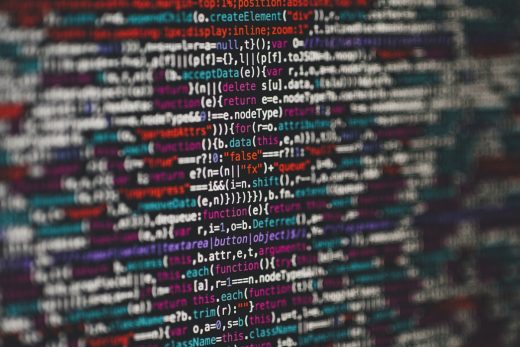Boundary Traversal Of Binary Tree node guide, Automate ticket distribution advice
Boundary Traversal Of Binary Tree
16 February 2023
Did you know that every node within a Binary Tree is allowed only two branches?
Binary Trees, as the name suggests, are tree-like data structures that are used for the purposes of searching and sorting data.
You can efficiently use Binary Trees for storing data in a hierarchical order. You can also perform several functions on Binary Trees such as deletion, insertion and traversal.
The traversal function of the Binary Tree is what we are going to be discussing in this blog. We will try to navigate how to travel through different nodes of Binary Trees.
Let’s find out how we can perform boundary traversal in Binary Trees using different approaches and algorithms.
Boundary Traversal Of Binary Tree approaches and algorithms
What are Binary Trees?
Now, the concept of Binary Trees comes under the complex data structures in programming.
Binary Trees can be described as a data structure that consists of a root and is structured in the form of a tree. The root of the tree branches out into nodes. Here each of the nodes contains a single child or two children nodes at maximum.
These children nodes are commonly referred to as the left and the right nodes of binary trees where their predecessor node is known as their parent node.
The root node of the Binary Tree i.e, from where the tree actually begins is commonly known as the Ancestor Node of the tree.
An interesting fact to note about the Binary Trees is that, the value of the left nodes of Binary Trees is always smaller in comparison to its right nodes.
This is something that we can keep in mind while we learn about boundary traversal of Binary Tree in the next section of the blog.
What do you mean by Boundary Traversal in Binary Trees?
You can traverse Binary Trees in different forms of traversal methods depending on the complexity of the problem statement.
Since in this blog we are going to be discussing boundary traversal of Binary Trees, let’s find out what it exactly means.
Well, visiting all the boundary nodes of Binary Tree From its root till the last children nodes is commonly referred to as traversing the boundaries of Binary Tree.
This includes visiting the root node, the leftmost boundary, the right boundary as well as the left nodes of the tree.
In order to perform boundary traversal of Binary Trees, there are a few pointers that you need to keep in mind:
- the leftmost boundary beingsfrom its root node till the last left node of the Binary Tree
- Similarly, the right node begins from its root till the last right node of the Binary Tree
- The leftmost node of the Binary Tree can be reached by traversing through the left subtree. In case the last left node doesn’t exists, then we can certainly head towards the last right node of the tree
- Similarly you can traverse the entire right subtree in order to attain the last right node
How to perform boundary traversal in Binary Trees?
Let’s first consider the problem statement for performing boundary traversal of Binary Trees.
Problem Statement
You are provided with Binary Trees. Your task is to print all of the nodes present at the boundaries of this Binary Tree in an anti-clockwise manner. You can start from its root node of the tree.
Answer Key
We will begin by breaking the problem into three different parts:
- Firstly we will print the leftmost boundary of the tree in a top-down order
- Next up, we will print all of the left nodes from the left till the right of the Binary Tree. This can also be tackled in two different parts such as:
- Start by printing the leaf nodes from the left subtree from left to right
- Also, print the left nodes from the right subtree from left to right as well
- Finally, we can print the right boundary of yeh subtree in a bottom-up manner
Keep in mind to print each of the boundary nodes, we need to traverse the Binary Tree only once within the program.
Let’s have a look at the implementation of the algorithms for printing boundary traversal of Binary Trees based on the above pointers:
- Each of the Binary Tree nodes have data, start with placing a pointer to the left and the right children of the tree
- Next up, use the utility function for creating a new node for the tree
- Also, use a simple function for printing the leaf nodes of the Binary Tree.
- Print the entire left nodes of the Binary Tree in a top down manner
- Now, write a function for printing all the right nodes from Bottom-Up. To begin this process, call the right subtree and start printing from the last left node of the tree
- Run the driver program in order to all of the above test functions
Time Complexity for this approach:
O(n) here, n represents the number of nodes present within the Binary Tree
Another approach that we can apply is an iterative version of the former algorithms. The Iterative approach is commonly used for solving other programming problems such as linked lists, merging arrays and count inversions in a given set of data.
Let’s check out the iterative approach:
- Starting from the rightmost boundary visit all the right nodes except for the leaf nodes
- Next up, head over to the leftmost boundary and visit the entire left subtree except for the leaf nodes
- Now, perform an inorder or preorder traversal for the leaf boundaries of the tree and add them to the list as well
- We do not require any further iteration of the tree since the values gathered till now make the boundary of the Binary Tree
Time Complexity for this approach:
O(n)
Wrapping Up
The Binary Tree is one of the most efficient data structures that can hold a considerably larger sum of data in the form of leaf nodes.
Using the iterative approach is an effective strategy for tackling the Binary Tree problem discussed in the blog.
There are other coding problems as well that can be solved by using the iterative approach such as, finding the root in a BST, count inversions or merging two sorted arrays.
Comments on this guide to Boundary Traversal Of Binary Tree article are welcome.
Property
Architectural Designs – selection below for property:
BFI IMAX, South Bank
Design: Avery Associates Architects
IMAX Cinema London
7 ways to enjoy a portable projector at home

Building Articles
Architecture – selection:
Comments / photos for the Boundary Traversal Of Binary Tree advice page welcome







